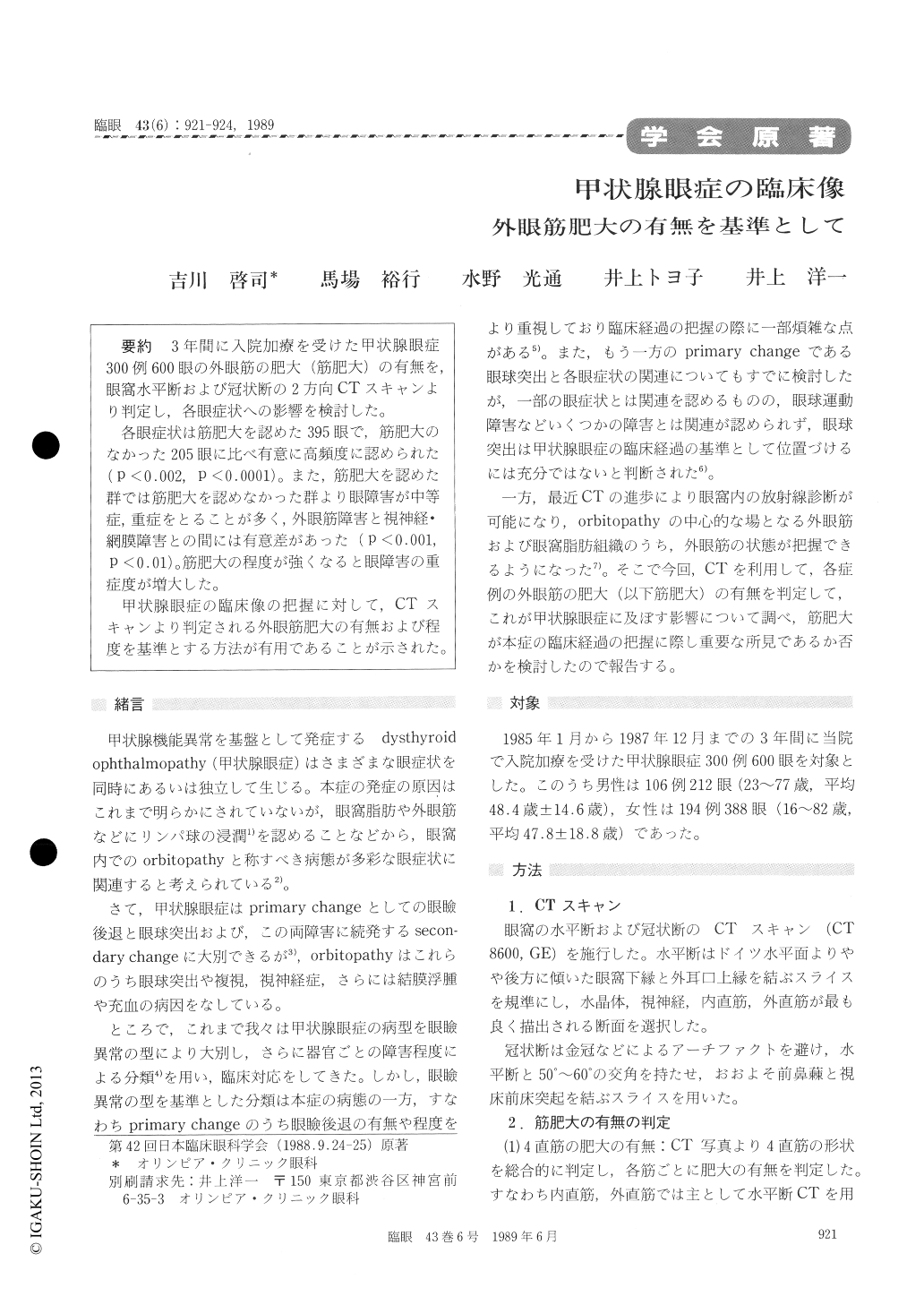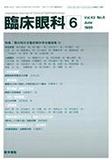Japanese
English
- 有料閲覧
- Abstract 文献概要
- 1ページ目 Look Inside
3年間に入院加療を受けた甲状腺眼症300例600眼の外眼筋の肥大(筋肥大)の有無を,眼窩水平断および冠状断の2方向CTスキャンより判定し,各眼症状への影響を検討した。
各眼症状は筋肥大を認めた395眼で,筋肥大のなかった205眼に比べ有意に高頻度に認められた(P<0.002,P<0.0001)。また,筋肥大を認めた群では筋肥大を認めなかった群より眼障害が中等症,重症をとることが多く,外眼筋障害と視神経・網膜障害との間には有意差があった(P<0.001,P<0.01)。筋肥大の程度が強くなると眼障害の重症度が増大した。
甲状腺眼症の臨床像の把握に対して,CTスキャンより判定される外眼筋肥大の有無および程度を基準とする方法が有用であることが示された。
We treated a consecutive series of 300 cases,600eyes, with dysthyroid ophthalmopathy as inpatientsduring the foregoing 3-year period. All the caseswere examined by axial and/or coronary orbitalCT scanning. We analyzed these cases and couldgrossly divide the cases into 2 groups based on thepresence or absence of extraocular muscle (EOM)involvement.
We detected a significantly higher incidence of avariety of eye symptoms in 395 eyes with EOMenlargement than in 205 eyes without EOM involve-ment.
Cases with EOM enlargement tended to showseverer eye symptoms involving ocular motility,optic nerve or the retina. The degree of EOMenlargement ran parallel to the severity of eyesymptoms.
The findings point to the clinical usefulness ofdividing the dysthyroid ophthalmopathy into twogroups based on the presence or absence of EOMenlargement.

Copyright © 1989, Igaku-Shoin Ltd. All rights reserved.


